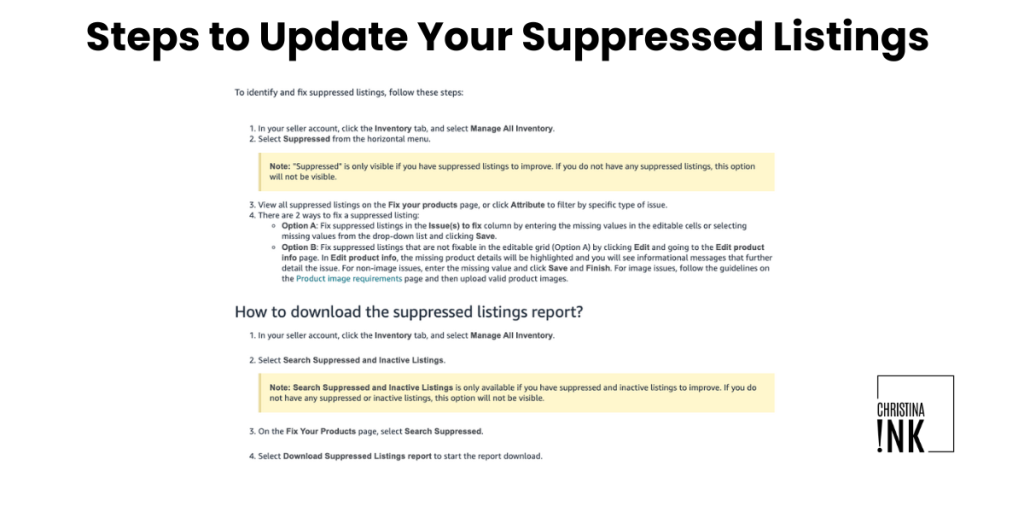For sellers, though, Amazon Bend the Curve has real-world implications for product listings, visibility and sales. If your catalog includes slow-moving, underperforming, or incomplete SKUs, there’s a chance they could be flagged for removal or suppression. This article breaks down what “Bend the Curve” means and what you can do right now to stay protected as Amazon redefines what “quality” looks like across its marketplace.
What is Amazon’s “Bend the Curve” project?
Bend the Curve is Amazon’s internal mission to reduce catalog clutter and improve buyer experience. The company has been quietly auditing product data across categories, identifying duplicate ASINs, broken variations, generic or missing detail pages and listings with repeated policy violations. This move follows years of exponential product growth that created a bloated, sometimes confusing marketplace filled with irrelevant search results and duplicate offers.
The project reportedly involves cross-functional teams within Amazon from catalog integrity to seller performance, working to “bend” the curve of catalog expansion back toward quality and efficiency. It’s not about deleting Amazon product listings so that high-quality listings can rise to the top. Sellers are starting to notice ripple effects in the form of sudden suppressed listings, new attribute requirements and changes in how variation families are structured.
Why Amazon is cleaning up “unsellable” listings
Amazon’s reputation relies on buyer trust and it’s safe to say that trust has been tested in recent years. Between counterfeit products, misleading detail pages and irrelevant search clutter, shoppers have been complaining about a growing sense of chaos. Amazon knows it can’t maintain its dominance without restoring confidence in search results — and that starts by cleaning up the catalog.
The company’s data shows that a large percentage of listings either never convert, contain missing images, or violate style guidelines. These listings waste server resources, dilute search quality, and slow the marketplace’s overall performance. More importantly, they frustrate buyers who click through multiple bad listings before finding what they actually want.
By focusing on “unsellable” listings, think expired FBA inventory, abandoned private labels, or duplicate ASINs. Amazon can reduce clutter, speed up page loads and make discovery smoother for shoppers. Sellers who maintain compliant, detail-rich, and actively sold listings stand to gain more visibility as weaker competition disappears.
This isn’t just cleanup, it’s algorithmic triage. Amazon is choosing to prioritize listings that make sales and meet buyer expectations. If your product doesn’t align with that vision, it risks getting caught in the cleanup. Take a look at the image below to learn how to fix suppressed listings if you’re stuck in cleanup mode.

How “Bend the Curve” affects marketplace sellers
The seller impact depends on how well their catalog is maintained. Some sellers are waking up to suppressed listings, unexpected policy flags, or removal notices without clear explanations. Others have seen subtle shifts in keyword rankings or lost visibility on older ASINs that once performed well.
The initial frustration is understandable. Sellers invest heavily in product research, photography, and content, so when listings vanish, it can feel like punishment. But understanding the “why” behind Amazon’s actions can help you adapt instead of react. In most cases, listings are flagged for one of three reasons: poor data quality, duplicate content, or repeated policy violations.
If you notice suppressed or deactivated listings, start by reviewing the Manage Inventory and Account Health dashboards for root causes. Pay attention to missing attributes, inconsistent variation structures and compliance warnings. Small fixes can help prevent bigger hits later.
How to identify at-risk listings
Before Amazon flags your listings for cleanup, you can take proactive steps to spot potential risks. Start by running a basic audit of your product catalog. Look for listings with low traffic, incomplete attributes, or poor image compliance. If your ASINs lack a unique product ID (UPC, EAN, or GTIN), or if you’re selling under “generic” brand names without approval, those are red flags.
Listings that haven’t generated sales in 90+ days, have repetitive copy, or contain outdated keywords are also candidates for suppression. Amazon’s algorithm is increasingly using behavioral data, not just text to determine relevance and listing health. That means engagement metrics like click-through rate, add-to-cart rate, and conversion all play into whether a listing remains visible or gets buried.
Don’t wait for a warning email to take action. By self-auditing now, you can correct issues before Amazon’s cleanup bots do it for you. Create a simple spreadsheet that tracks:
- Listing title quality
- Image compliance (white background, proper dimensions, no text overlays)
- Attribute completeness
- Duplicate ASINs or variation families
- 90-day sales volume
What steps you should take to cleanup your Amazon listings
The good news? Every seller can adapt. Below are some helpful steps to protect your catalog and position your listings for long-term visibility and trust.
1. Start with a complete catalog audit
Before Amazon does it for you, clean your own house. Review every ASIN in your inventory for red flags like missing attributes, outdated copy, poor-quality images, or duplicated variations. Look for products that haven’t sold in 90+ days or have high return rates, those are often the first to be suppressed. Retire old listings, consolidate duplicates and make sure your product identifiers (UPC, EAN, or GTIN) are valid and GS1-verified. A leaner catalog gives Amazon fewer reasons to flag your account during the cleanup.
2. Optimize for accuracy, not just Amazon SEO
Amazon’s algorithms are evolving past basic keyword matching. The “Bend the Curve” cleanup focuses heavily on structured, machine-readable data. That means your titles, bullet points and attributes need to clearly communicate what your product is, not just try to rank for as many terms as possible. Prioritize clarity. Spell out dimensions, materials, color families and use cases. Clean, consistent data tells Amazon your listing belongs in the marketplace and deserves to stay visible.
3. Check for compliance and brand consistency
If there’s ever been a time to tighten your backend details, this is it. Verify that your brand name, manufacturer information, and brand registry status are accurate across every ASIN. Make sure your invoices match your listings, and that your suppliers are legitimate and authorized. During “Bend the Curve,” Amazon is leaning on authenticity checks, meaning any inconsistency, even a minor one, could result in Amazon listing suppression or delisting. Sellers who keep documentation organized and transparent are far more likely to retain their catalog without interruption.
4. Retire, replace, or reinvent old listings
Not every product deserves to stay listed. Some SKUs no longer fit your brand, meet current compliance standards, or drive meaningful sales. That’s okay. Instead of holding on, archive or replace them with refreshed versions that better represent your current catalog. Think of it like pruning, the healthier your remaining listings, the more growth potential Amazon’s algorithm sees in your store.
5. Track everything you update
Create an internal tracking sheet for all listing updates, including dates, reasons for edits, and corresponding ASINs. This gives you a record to reference if Amazon flags something unexpectedly. Sellers who document their catalog health have a much easier time submitting reinstatement appeals or proving authenticity later on.
6. Treat This as a Marketplace Reset, Not a Punishment
It’s easy to see “Bend the Curve” as a threat, but it’s an opportunity to stand out. Amazon is shifting from “more listings” to “better listings.” Sellers who embrace that mindset will benefit most. If your data is clean, your listings are current and your brand presence is consistent, this cleanup can work in your favor.
The hidden opportunity behind the cleanup


While many are worried about losing Amazon product listings, this cleanup can open doors for the sellers who adapt quickly. With billions of low-quality listings being removed, competition is thinning in saturated categories. That means stronger listings have a clearer path to visibility, higher conversion, and better ad performance. It might be a good time to review your high-performers and conduct strategic Amazon listing optimization to strengthen your marketplace position.
Think of it as a marketplace reset. For years, Amazon’s search results have been bloated with near-identical products fighting for clicks. “Bend the Curve” aims to restore balance, rewarding listings that are accurate, differentiated and genuinely helpful.
For brands that take list optimization seriously, this is an opportunity to own their category space. Updating your content, refining your imagery, and leveraging tools like Manage Your Experiments can help boost your conversion rate just as weaker competition gets purged. Sellers who are proactive will see the cleanup not as a threat, but as a visibility windfall.
How to future-proof your Amazon catalog
Staying ahead of Amazon’s evolving standards takes consistent care. Treat your listings like living, breathing entities that require regular maintenance. That means checking for compliance updates, updating keywords to match shopper intent and refreshing images or A+ content as trends shift.
One of the smartest moves you can make is building a quarterly “catalog hygiene” routine. Review your top-performing ASINs and ensure every field, from bullet points to backend keywords is filled with relevant, non-repetitive information. Make sure your brand name and attributes match across all SKUs and avoid overstuffing keywords or duplicating titles.
Next, focus on data accuracy. Amazon’s algorithm now rewards listings with clean product identifiers and complete attribute sets. Sellers who skip details, like color family, size, or materials lose credibility and rank. Even seemingly minor updates like fixing dimension units or clarifying packaging quantities can prevent suppression.
Finally, keep your Amazon brand registry active and your intellectual property protected. A clean, consistent brand identity signals to Amazon (and to AI) that your catalog is trustworthy and not part of the duplication problem.
The bigger picture: Amazon is a long game
“Bend the Curve” is more than a one-off cleanup. It’s Amazon’s long-term strategy to redefine what belongs in its marketplace. By shifting focus from volume to quality, Amazon can rebuild consumer confidence, lower its infrastructure costs, and streamline search across devices, including voice and AI shopping assistants.
In the next year, you expect to see even stricter data requirements and increased automation in catalog management. The line between “active” and “inactive” listings will blur as Amazon uses engagement metrics to dynamically decide what stays visible.
Change on Amazon rarely happens quietly and “Bend the Curve” is proof. It’s a wake-up call for every seller still relying on outdated Amazon product listings or ignoring catalog maintenance. Yes, the cleanup may feel unsettling, but it’s also an invitation to upgrade, clarify and build more resilient product pages.
Ready to Strengthen Your Amazon Listings? If the Bend the Curve cleanup has you wondering whether your listings are safe, it’s time for a deeper look. Book your free Amazon listing audit today to see how strategic optimization can keep your listings visible, compliant and converting.

Christina Passmore
CEO, Christina Ink
Christina Passmore helps Amazon sellers and agencies scale through content strategy, marketplace optimization and positioning. A former Amazon seller, she brings deep knowledge of Amazon listing optimization, account health, marketplace trends, and seller growth. When she’s not writing or analyzing listings, you’ll find her exploring the Rockies or working through a CrossFit WOD.

LIKE THIS ARTICLE?